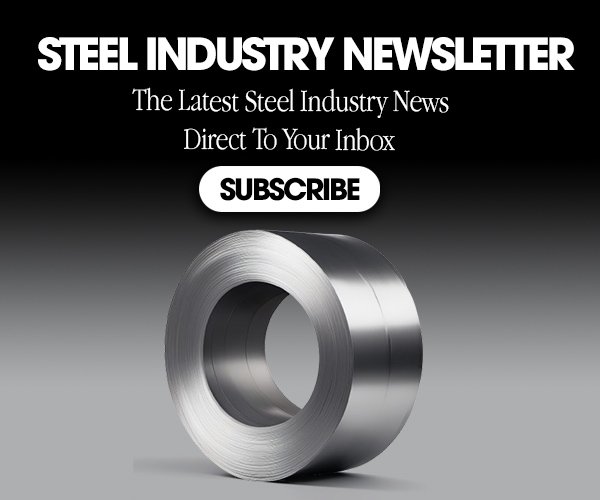In a surprising move that has sent shockwaves through global markets, President Elect Donald Trump has announced plans to impose significant tariffs on imports from Mexico, Canada, and China when he takes office Jan 20th 2025. This decision, if implemented, would have far-reaching consequences for international trade, domestic industries, and American consumers. This article will review the details of this announcement and explore its potential impacts to the steel industry and steel consumers.
The Tariff Announcement
Trump has declared his intention to impose a 25% tariff on all imports from Mexico and Canada, as well as a 10% increase on existing tariffs on Chinese goods. This move comes as part of his broader “America First” economic policy, which he claims will protect American jobs and industries.
Key Points of the Announcement:
- 25% tariff on all imports from Mexico
- 25% tariff on all imports from Canada
- 10% increase on existing tariffs on Chinese goods
It’s important to note that these tariffs would affect a wide range of products, from agricultural goods to manufactured items, potentially disrupting supply chains across various industries.
Impact on Major Trading Partners
The United States is the world’s largest importer of goods, with Mexico, China, and Canada being its top three suppliers. This fact underscores the significance of Trump’s tariff announcement and its potential to reshape global trade dynamics.
Trade Volume with Affected Countries
| Country | Annual Trade Volume with U.S. (2023) |
|---|---|
| Mexico | $798.4 billion |
| Canada | $718.4 billion |
| China | $690.6 billion |
These figures highlight the enormous scale of trade that would be affected by the proposed tariffs, potentially leading to significant economic repercussions for all countries involved.
Effects on U.S. Consumers
The implementation of these tariffs would likely have a substantial impact on American consumers. Here are some potential consequences:
- Higher Prices: Tariffs are often passed on to consumers in the form of higher prices for goods. This could lead to increased costs for a wide range of products, from groceries to electronics.
- Reduced Purchasing Power: As prices rise, consumers may find their purchasing power diminished, potentially leading to a decrease in overall consumer spending.
- Limited Product Choices: Some imported products may become scarce or unavailable if foreign suppliers decide to reduce their exports to the U.S. due to the tariffs.
- Inflation Concerns: The widespread price increases resulting from these tariffs could contribute to inflationary pressures in the U.S. economy.
Impact on the Steel Industry
The steel industry, which has been a focal point of previous tariff discussions, would likely see significant effects from these new measures.
Potential Benefits for U.S. Steel Producers:
- Increased Competitiveness: Higher prices on imported steel could make domestic steel more competitive in the U.S. market.
- Job Creation: A boost in domestic steel production could lead to more jobs in the steel industry.
- Increased Investment: Steel companies might invest more in U.S. facilities if they anticipate long-term protection from foreign competition.
Challenges for Steel-Consuming Industries:
- Higher Input Costs: Industries that rely heavily on steel, such as automotive and construction, may face higher costs for their raw materials.
- Reduced Competitiveness: Higher production costs could make U.S. manufacturers less competitive in global markets.
- Supply Chain Disruptions: Companies may need to restructure their supply chains, potentially leading to temporary shortages or production delays.
Case Study: The Automotive Industry
The automotive industry serves as a prime example of how these tariffs could impact a major U.S. industry that relies on international supply chains.
Potential Effects:
- Cost Increases: Cars could become more expensive due to higher costs for imported parts and materials.
- Job Losses: If car sales decline due to higher prices, it could lead to job losses in the automotive sector.
- Supply Chain Restructuring: Automakers might need to find new suppliers or relocate production to avoid tariffs.
Economic Implications
The proposed tariffs could have wide-ranging effects on the U.S. economy:
- GDP Impact: Some economists predict that the tariffs could reduce U.S. GDP growth by 0.5-1% annually.
- Job Market Effects: While some industries might see job growth, others could face job losses due to higher costs and reduced competitiveness.
- Trade Deficit: The tariffs might reduce the U.S. trade deficit in the short term, but could lead to retaliatory measures that offset this effect.
- Market Volatility: The announcement has already led to increased volatility in stock markets, with particular impacts on companies with significant international exposure.
International Response
The announcement of these tariffs has prompted swift reactions from the affected countries:
Mexico’s Response:
- Threat of retaliatory tariffs on U.S. agricultural products
- Potential reduction in cooperation on border security and immigration issues
Canada’s Reaction:
- Consideration of counter-tariffs on U.S. goods
- Possible legal challenge through USMCA dispute resolution mechanisms
China’s Stance:
- Threat of increased tariffs on U.S. exports to China
- Potential reduction in purchases of U.S. agricultural products
These responses highlight the risk of escalating trade tensions and the potential for a broader trade war.
Legal and Political Challenges
The implementation of these tariffs would likely face significant legal and political hurdles:
- Congressional Opposition: Members of Congress from both parties have expressed concerns about the economic impact of the tariffs.
- Legal Challenges: Industry groups and affected companies may file lawsuits to block the tariffs.
- International Trade Agreements: The tariffs may violate existing trade agreements, potentially leading to challenges at the World Trade Organization.
Scott Bessent: Treasury Secretary Nominee and His Stance on Tariffs
In the backdrop of Donald Trump’s recent tariff announcements, the appointment of Scott Bessent as the new Treasury Secretary has drawn significant attention. Bessent, a seasoned hedge fund manager and former associate of George Soros, is expected to play a pivotal role in shaping the economic policies of the incoming administration. His views on tariffs, particularly in relation to Trump’s aggressive trade strategies, are crucial for understanding the potential impact on both domestic and international markets.
Background on Scott Bessent
Scott Bessent has a robust background in finance, having worked with some of the most influential figures on Wall Street. His experience includes serving as the chief investment officer at Soros Fund Management and running his own hedge fund, Key Square Capital Management. Bessent is known for his expertise in “Global Macro” investing, which involves making strategic bets based on macroeconomic trends and geopolitical developments.Trump’s nomination of Bessent has been met with mixed reactions. While many in the financial markets view him as a stabilizing force, there are concerns about his commitment to Trump’s proposed tariffs. Reports indicate that Bessent faced opposition within Trump’s inner circle due to his perceived moderation regarding tariff increases, particularly those aimed at China.
Bessent’s Opposition to Aggressive Tariffs
Bessent’s stance on tariffs appears to be more nuanced compared to Trump’s hardline approach. He has characterized tariffs as tools for negotiation rather than definitive policy outcomes. In various statements, he has suggested that while tariffs can serve as a means to protect American industries, they should be implemented cautiously to avoid unintended economic consequences.
- Negotiation Strategy: During his tenure at Soros Fund Management, Bessent referred to tariffs as a “loaded weapon,” indicating that while they can be used effectively in negotiations, they should rarely be “fired.” This perspective aligns with his belief that aggressive tariff policies might not always benefit American consumers or the economy at large.
- Inflation Concerns: In interviews, Bessent has acknowledged that tariffs can be inflationary. He emphasized the need for a phased approach to implementing tariffs to mitigate their impact on consumer prices. This cautious stance suggests that he may advocate for moderation within Trump’s administration regarding trade policies.
- Economic Impact: Analysts have noted that Bessent’s views reflect a broader concern about how high tariffs could lead to increased costs for American consumers. He has previously stated that tariffs should be seen as a “one-time price adjustment” and recommended layering them in gradually to minimize disruption.
Market Reactions and Future Implications
The financial markets have reacted positively to Bessent’s nomination, viewing him as someone who could temper the more extreme aspects of Trump’s trade agenda. Following his appointment announcement, stock indices showed signs of recovery, suggesting investor confidence in his ability to manage economic policy effectively.
- Investor Confidence: Analysts have expressed relief at Bessent’s nomination, believing he will bring stability and consistency to economic policies during Trump’s second term. His background in finance is seen as an asset in navigating complex trade relationships and mitigating potential fallout from aggressive tariff strategies.
- Potential Conflicts: Despite his alignment with some of Trump’s economic philosophies, there are indications of potential conflicts between Bessent and other cabinet members who may support more aggressive tariff measures. This dynamic could lead to internal debates within the administration about the best approach to trade policy.
Long-Term Economic Consequences
While the full impact of these tariffs would take time to materialize, some potential long-term consequences include:
- Reshaping of Global Supply Chains: Companies might restructure their supply chains to avoid tariffs, potentially leading to significant shifts in global trade patterns.
- Inflation: Sustained higher prices could contribute to inflationary pressures in the U.S. economy.
- Economic Growth: The tariffs could potentially slow economic growth in the U.S. and globally if they lead to reduced trade and investment.
- Innovation: Higher costs and reduced competition could potentially slow innovation in affected industries.
Conclusion
Trump’s announcement of new tariffs on Mexico, Canada, and China represents a significant shift in U.S. trade policy with potentially far-reaching consequences. While proponents argue that these measures will protect American jobs and industries, critics warn of higher consumer prices, job losses in certain sectors, and the risk of a broader trade war. As this situation continues to develop, it will be crucial for businesses, policymakers, and consumers to closely monitor the implementation of these tariffs and their effects on the U.S. and global economies. The coming months will likely see intense negotiations, potential legal challenges, and possibly further policy adjustments as the full implications of this decision become clear.
If you enjoyed this article about U.S. Steel and Nippon Steel check out some of our other articles on the subject:
Trump’s Re-election and Potential Impact on the U.S. Steel Industry
U.S. Steel-Nippon Steel Merger: Arbitration Looms as Global Hurdles have Cleared
U.S. Steel “Corrects the Record” on Transaction with Nippon Steel
EU Approves Nippon Steel – U.S. Steel Acquisition, US DOJ Review Ongoing
Nippon Steel U.S. Steel Acquisition Update
Automakers Challenge Potential Cleveland-Cliffs-U.S. Steel Merger
Nippon Steel Determined to Acquire U.S. Steel Despite Scrutiny
Biden and Trump Oppose Nippon Steel’s U.S. Steel Acquisition
U.S. Steel Acquisition: Nippon Embraces USW Challenge
Be sure to subscribe to the Steel Industry Newsletter below for the latest steel related news direct to your inbox!









